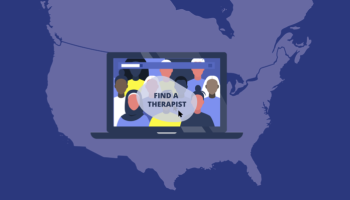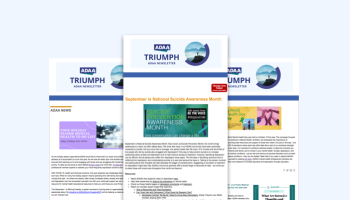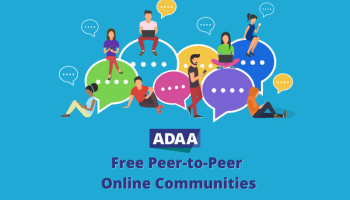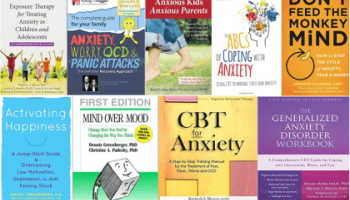Humour in OCD Therapy? You Bet.
Humour in OCD Therapy? You Bet.
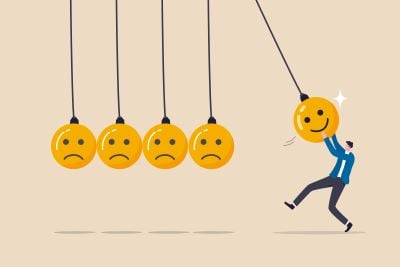
As therapists, we know that OCD is no laughing matter. But that doesn't mean we can't use humour when fighting back OCD. In fact, as an OCD therapist the use of humour can be an integral part of the ERP experience. It is not unusual for me to be laughing along with both my child/teen and adult clients at OCD’s creativity and ridiculousness. However, the use of humour in OCD treatment is not for everyone and there are some definite caveats as to when and how to use it. So, why would you as a therapist incorporate humour into OCD treatment? and how? Are there do's and don'ts when using humour? Most definitely!
Why use humour?
Not only is smiling/laughter a natural stress reliever and good for one’s health, but it also changes the biofeedback the brain receives. Smiling is an inconsistent action with danger and if we act as if a situation is not dangerous then we teach the amygdala that it does not need to protect us by sending an alarm signal. The OCD loop is maintained by attributing meaning to the intrusive thought (e.g., “thought action fusion”) leading to distress and fear and the desire to rid oneself of that feeling. As therapists, through CBT and particularly ERP, we help our clients reduce and eliminate the emotional response (of fear) to the intrusive thought and that in turn teaches the amygdala to stop sending the false alarm.
Using humour in treatment helps reframe the content of the obsession as less threatening and, most importantly, it takes away OCD’s power. It helps the sufferer see the obsession as ridiculous, less scary and it changes or diminishes the level of emotion associated with the intrusive thought. Incorporating humour can lighten the mood and help relieve tension and make it easier for clients to share, especially when the content of the obsessions is hard to talk about (e.g., sexual or harm obsessions). It can help engage the client more in the therapeutic process and increase motivation by strengthening the therapy relationship. And most importantly, it can allow the OCD sufferer to not get caught up rituals, such as arguing with OCD and trying to talk themselves out of their fears, and this in turn breaks the OCD loop.
Do’s when using humour
- Do ensure that you have a good therapeutic alliance and have built trust with your client and that they understand the process of treatment.
- Do use humour sparingly, it is not something that is used repetitively as there is a right time and place to use it and being aware of timing is crucial to its effectiveness.
- Do consider how your client is feeling in a particular moment, it may be fine one day but not another, depending on your client’s stress level.Do consider the age of your client to determine how and when to use humour, with children ensure that it is developmentally appropriate and use terms they will understand.
Don’ts when using humour
- Don't use humour if you are just starting therapy, that does not mean you cannot be funny, but until your client understands how OCD works and you have provided psychoeducation that explains the rationale for laughing at OCD, it can be hurtful and detrimental to the therapeutic relationship.
- Don’t use humour when your client is in the thick of OCD and distress levels are high as the feelings are very real even if the obsessions do not make sense.
- Don’t use humour in response to an obsession as a means of reducing your clients’ anxiety and be aware if your client is using it as a tool to reduce anxiety as it can become a compulsion.
How to Incorporate Humour in OCD Therapy
- Externalise OCD as a bully or enemy by giving OCD a personality (e.g., with children, give OCD a name and draw a picture and with adults call it OCD and refer to it as a separate being). Not only does it help with motivation, but it creates a character and allows us to make fun of and laugh at OCD, diminishing its power.
- Teach your client to “talk back to OCD” in a humourous manner as it allows the thought action fusion distortion that OCD relies on to be broken. It diminishes the importance of the thoughts and allows clients to recognize the ridiculousness of what OCD is saying.
- "Really OCD, that’s what you want me to believe, that I am going to hurt my kids? OK, whatever you say. Yup, you are absolutely right, it’s totally possible that I will do that."
- Use humour by over-exaggerating the fear, and challenging OCD with a “bring it on attitude” as this reduces the importance of the obsessions and helps to take away the emotional response that feeds OCD.
- “Oh, here we go again (eye roll). You are trying to scare me. Is that the best you can do? What other scary thoughts do you want to put in my brain? Come on, I am ready for you, do your best.”
- Use humour to come up with creative and funny ERP tasks that challenge OCD but lighten the situation and make it easier for clients to stay in contact with the triggers without having to do a ritual. For example:
- For kids/teens: Create a movie and act out throwing up into a toilet (chewed up food and all) for a fear of getting sick
- For adults: Put hair in childlike piggy tails, and walk around in a mall or grocery store for a fear of not looking right/perfectionism
- For kids/teens: Parents play catch back and forth with a “contaminated” scrunched up Kleenex
If you choose to use humour in OCD treatment, make sure you have a good sense of your client and their needs, as more harm than good can occur. It is not the right approach with all clients. If used, it must be in a manner that continues to allow your client to sit with the anxiety and accept the uncertainty of their obsessions.
Using humour and laughter in therapy is a skill that if used correctly can be a great addition to ERP and increase its effectiveness. Laughing at OCD teaches the amygdala to stop sending the false alarms that maintain the OCD loop. So, if it is the right fit, let’s tickle that funny bone and be creative all while challenging OCD. How do you use humour in your therapy sessions? Are there times when you had to backtrack after realising it was not the right fit?
This post is presented in collaboration with ADAA's OCD and Related Disorders SIG. Learn more about the SIG.



